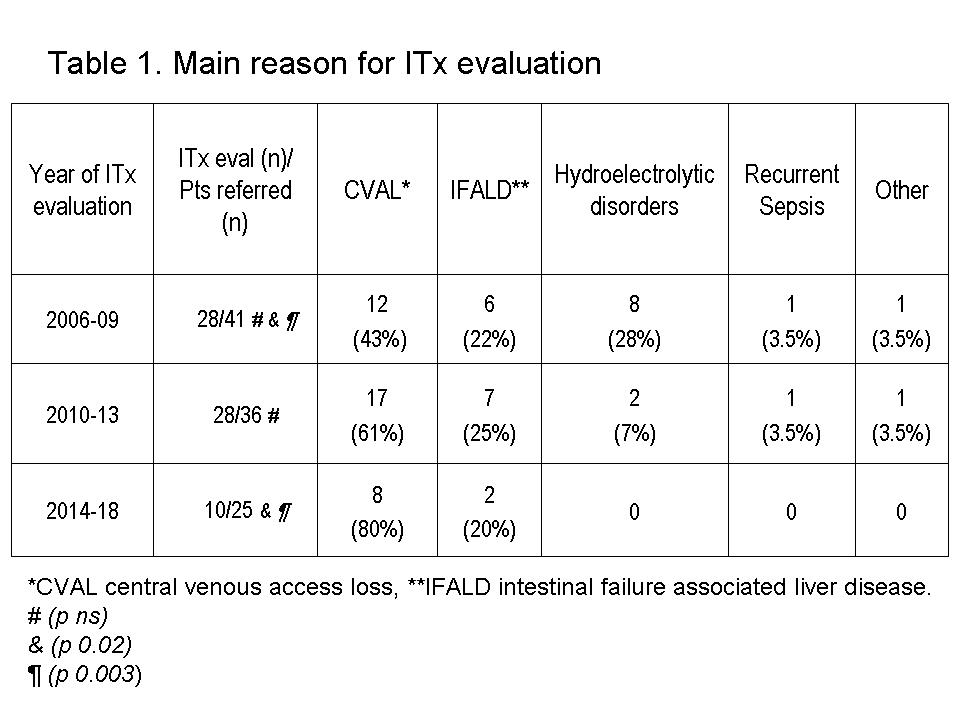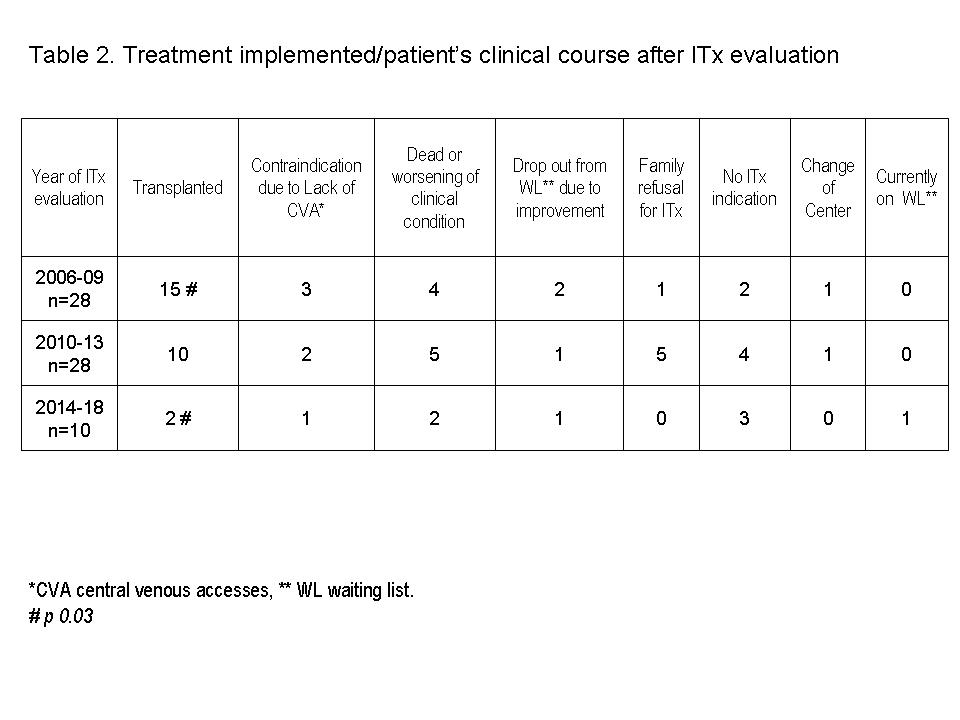Introduction: Intestinal transplantation (ITx) has been accepted worldwide as a valid treatment for intestinal failure when other options for medical o surgical rehabilitation have failed and severe complications related to intestinal insufficiency have emerged.
The aim of this study is to show how the prevalence and indications for ITx evaluation and ITx in children have evolved over the last twelve years in a single Intestinal Rehabilitation and Intestinal Transplant Program in Argentina.
Material and methods: This is a retrospective review of a prospectively filled database, from March 2006 to December 2018, including every patient <18 years of age with intestinal failure that was referred to this Program. Demographic data, diagnosis, indication for evaluation and indication given according to evaluation are analyzed. Patients were divided into three periods for analysis and comparison: 1= 2006-2009; 2= 2010-2013 and 3= 2014-2018.
Results: A total number of 102 Pediatric patients with chronic IF were referred to the Unit over the studied period (41 patients in Period 1, 36 patients in period 2 and 25 patients in period 3). From the total number, 66 patients were referred for ITx evaluation and are analyzed here; 23 were female, the primary diagnoses were: intestinal atresia (12); long segment Hirschsprung's (11); gastroschisis with atresia (9); no neonatal volvulus (8); gastroschisis (8); NEC(6); perinatal volvulus (4); CIPO (3); microvillous inclusion disease (2); others (3). At the time of ITx evaluation the mean age was 38 months (SD±44), their mean time on PN was 29 months (SD± 37). Table 1 shows indications for ITx evaluation divided by period and Table 2 shows the treatment implemented/patient’s clinical course after the evaluation was completed.


Conclusions: The number of ITx evaluations and the indication of ITx have suffered a significant decrease since 2013. The number of patients excluded from the WL due to clinical deterioration and number of deaths while on WL reflects both, late referrals and scarcity of pediatric donation. Loss of central venous accesses continues to be the main indication for ITx referral and lack of venous accesses has been the main cause for contraindication of ITx in this program.
.jpg )